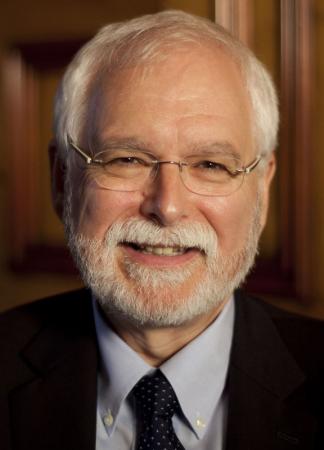As cells assemble into a doughnut shape and ascend a hydrogel cone, they do work and thereby reveal the total power involved in forming a three-dimensional structure. That measure not only could help tissue engineers understand their living building materials better, but could also add insight to the understanding of natural tissue formation.
 PROVIDENCE, R.I.
PROVIDENCE, R.I. [Brown University] — Tissue engineering makes biologists builders, but compared to their civil engineering counterparts, they don’t know much about the properties of the materials and structures they use, namely living cells. To improve that knowledge, Brown University researchers have developed a simple and reliable system for measuring the power that cells employ to assemble into three-dimensional tissue. The research appears online the week of April 11 in
Proceedings of the National Academy of Sciences.In addition to helping engineers evaluate how quickly and stably different cell types will combine into desired structures, the power measurements could also improve scientists’ understanding of natural tissue growth, such as in fetal development, and how cancerous cells sometimes break off from a tumor and travel in the body, said Jeffrey Morgan, the paper’s senior author and associate professor of medical science in Brown’s Department of Molecular Pharmacology, Physiology and Biotechnology.

“Cells are the ultimate building parts, and it’s important to understand how they are held together, how they assemble together and the energies with which they do that, if you want to delve into the field of tissue engineering,” said Morgan, who last year co-developed the first
artificial human ovary. “Sometimes these complex processes go wrong, and that’s where it’s relevant to cancer in terms of cell-to-cell adhesion. But it also plays out very nicely in developmental biology where a very complex 3-D orchestration of cell movement and forces gives rise to new tissues and organs.”
Climb the cone
In the system, the researchers deposited cells in very small wells made of a specially designed hydrogel. The wells each have a cone of different steepness rising in the middle, like Bundt cake pans do. The cells form a doughnut shape around the cone. The mutual attraction of the cells then causes the doughnut of living cells to slide up the cone while a video microscope watches. The observed rate at which this mass of cells overcomes the force of gravity to ascend the cone yields a valuable number for the overall power exerted by the cells.
“There’s no need to calibrate this device, because gravity is consistent and reliable and there are no moving parts other than the living cells,” Morgan said.
Such overall measures of energy, time, and power have been hard to obtain, said lead author and doctoral candidate Jacquelyn Youssef. Many scientists have studied distinct forces and energies within and among cells, such as the bonding strength between particular proteins, but such measures leave tissue engineers to estimate the total energy in a structure by adding up what’s known about the cells, related proteins, and their many interactions.
“What we’ve developed looks at all these things in this one system together,” Youssef said. “There’s lots of moving parts.”
Strong climber
Measuring cellular effort is a matter of observing how rapidly cells overcome the force of gravity and climb the cone. “There’s no need to calibrate this device, because gravity is consistent ... there are no moving parts other than the living cells,” Morgan said.
Credit: Morgan Lab/Brown University
At the same time as it offers an aggregate measure, the system allows for teasing out the relative contributions of those moving parts. In their experiments, the team, which also included Lambert Freund, professor emeritus of engineering at Brown, and recent Ph.D. graduate Asha Nurse, used a drug treatment to inhibit the contractions cells use to “grab” each other. They found that among human skin fibroblast cells, eliminating that particular action took away about half of the total power of the doughnut structure formation.
The researchers worked with two types of cells in the paper. In addition to human skin fibroblasts, which aggregated and ascended the cones in a couple of hours, they also tested liver cells, which took days to reach the same peaks.
Morgan said the system will work for many other cell types and even mixtures of cells as well, making it a promising instrument for assessing the structural characteristics of the variety of building materials that tissue engineers might choose to use in their structures. Bioengineers can also use it to measure the effect different chemicals or drugs might have on the rate or energy of tissue formation.
“What we’re driving at is an understanding of how cells will spontaneously form these three-dimensional structures,” Morgan said. “The rate at which they do that is important to understanding how to design something more complex.”
Funding for the research came from the National Science Foundation and the National Institutes of Health.
 Brown's Sarah Huebscher '10 ScM '11, who completed her bachelor's degree in engineering and is now a current master's degree student in the Program in Innovation Management and Entrepreneurship (PRIME), has been selected as one of eight finalists in the Rhode Island Business Plan Competition.
Brown's Sarah Huebscher '10 ScM '11, who completed her bachelor's degree in engineering and is now a current master's degree student in the Program in Innovation Management and Entrepreneurship (PRIME), has been selected as one of eight finalists in the Rhode Island Business Plan Competition. The finalists are competing for $250,000 in prizes. Final presentations are scheduled for May 3 at the RIBX business expo at the R.I Convention Center. Winners will be announced following the presentations. A top overall winner will take home a $50,000 cash prize.
The finalists are competing for $250,000 in prizes. Final presentations are scheduled for May 3 at the RIBX business expo at the R.I Convention Center. Winners will be announced following the presentations. A top overall winner will take home a $50,000 cash prize.




